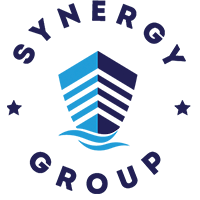The biggest change to shipping since the advent of containerisation
On publication of this article, the 1 January 2020 compliance date for the sulphur cap fuel changeover will have passed. This is probably the most significant regulation change, with the greatest scope, since internal combustion engines came into being. It’s a precise effect, and how the industry will adapt to this change in fuel specifications, are matters of the utmost concern.
The maritime industry has long been planning, and there have been two approaches:
- Continue with HSFO and use scrubbers in order to meet the new SOx emission controls.
- Use new fuel blends of less than 0.5% sulphur content.
At the moment it seems that scrubber installation has found favor among owners of very large container vessels, bulk carriers and tankers, where bunkering locations are predictable and owners or charterers should be able to recoup the cost due to greater daily fuel consumption and an assumed continuing difference in bunker price between HFO and VLSFO. This also means that a greater number of vessels, overall, will be expected to operate on VLSFO, and at a recent conference, there was consensus among representatives of refineries and fuel suppliers that by 1 January 2020 at least some blend of VLSFO would be available at most major bunkering facilities. Though of course implementation plans, training and risk mitigation must already be in place, I here outline some of the likely challenges, as well as some common sense steps to avoid serious operational problems.
FUEL BLENDS
Broadly, there are two types of fuel available in the market:
- One has a base of Residual Fuel Oil (RFO) and aims to meet VLSFO specifications by blending with other streams. This fuel is high in aromatics, with viscosity around 150 CST and higher density.
- The other has a distillate fuel base and is blended to meet VLSFO specifications. This fuel is high in paraffins and has viscosity from 40 CST to under 10 CST and lower density.
These two fuels have very different characteristics and present serious incompatibility risks.
INCOMPATIBILITY
Conventionally, vessels try to avoid mixing two different stems, though it was generally accepted that a 90:10 mix ratio was safe. But this is no longer the case. Innospec conducted stability tests for several hundred VLSFO blends and found that:
- 35% of the fuels failed the test without intermixing;
- 50% failed after intermixing;
- Some samples failed at a 90:10 mix ratio
It is widely thought that a fuel with an HFO base would be incompatible with one with a distillate base. So it is advisable to check the difference between viscosities and densities of two stems and take adequate precautions when there is a considerable difference in the figures.
HEATING
Viscosity and other properties may vary greatly from one VLSFO batch to the next. Some distillate fuel blends may not need any heating prior to injection, and overheating may lead to instability due to oxidation. Fuel systems may develop vapor lock when distillate fuel blends are heated. Vessels should ensure there is no leakage in the steam line valves at tanks and heaters, and that the viscometer is working reliably. VLSFO from distillate fuels may be high in paraffins, which will form wax at lower temperatures, a process impossible to reverse. This was never a problem with HFO. In the past, vessels could leave HFO tanks cold and usually simply heat them up just before fuel use. So, if distillate blends of VLSFO are to be stored, a reliable heating system is needed, and temperatures must be monitored so tanks are kept at around 10C above the pour point.
STABILITY
Stability of new blend fuels could be a concern, and maybe further complicated by factors like storage duration and some degree of mixture in bunker barge or vessel tanks. So good management must ensure that fuels are consumed in stem order.
CATALYTIC FINES
Though there is no direct correlation between new blends of fuel oils and cat fines, some vessels receiving VLSFO have reported higher than normal levels. The limit for cat fines in supplied fuel is 60 PPM, but engine manufacturers suggest that cat fines at the engine inlet should not exceed 15 ppm, and even then only for a very short time. So, even though fuel oil meets its specification, it may still cause a lot of harm to the engine if cat fines are not reduced through efficient purification and draining of water in the service and settling tanks.
SUMMARY
In summary, the following are some of the steps that should be considered for trouble-free engine operation:
- Strip storage tanks completely, in the most favourable trim, to leave a minimum of unpumpable fuel;
- Prepare for bunkering by gathering old fuel so as to leave as many empty tanks as possible for fresh bunkers;
- Avoid mixing of bunkers if at all possible. Greater focus is needed during bunkering to ensure that the samples signed for are the “true representative samples” of the fuel bunkered;
- Plan consumption so that the fuels supplied earlier are consumed first;
- Bunker Delivery Notes must be compared to highlight any large difference in density and viscosity between fuels. It may be necessary to use a sludge conditioner or even LSMGO between grades with vastly different characteristics;
- Maintain the temperature of VLSFO from distillate blends at about 10 degrees higher than the pour point in storage tanks;
- Ensure proper operation of storage tank heating coils and have a reliable means of keeping track of storage tank temperatures;
- Conduct onboard compatibility tests between two batches before changing over. This can be done either by a filter paper test or by mixing samples in glass containers, in ratios like 90:10 and 50:50, and setting them aside for observation;
- Depending on the fuel oil system configuration, avoid as far as possible intermixing different batches in the service and settling tanks;
- If tests indicate incompatibility, it may be necessary to use sludge conditioner in the service and settling tanks. Alternatively, some LSMGO might be added, between the two batches;
- Maintain high purification efficiency by maintaining optimum temperature and running at minimum throughput, with an optimum desludging cycle for eliminating cat fines as far as possible (be aware that distillate blends may not need any heating at all);
- Land before and after purifier and engine inlet fuel samples at scheduled intervals to ensure that the purifiers are operating efficiently and cat fines levels are well under control;
- Fuel systems should be well maintained, to prevent leakage when using low viscosity fuel oils;
- Viscometers should be working efficiently. When using the temperature control method, take care not to overheat and thus avoid problems due to vapor production;
- Combustion characteristics of fuels may differ greatly, so it may be advisable to change over to a new fuel batch soon after receiving test results and run on the new fuel for a couple of days, hopefully, to ensure that there are no engine problems. This might prevent a vessel being stranded without ME power after first wholly consuming a proven stem and then discovering that a new batch is problematic;
- Owing to lower sulphur content, the cylinder oil feed rate should be suitably lowered and scrape down oil analysis conducted regularly, to prevent problems due to excessive alkalinity in the combustion spaces.
About the author:

Mr Sanjiv Mishra heads the Ship Management Division of Synergy Group. He studied Marine Engineering in DMET Calcutta and has over three decades of maritime experience. As the head of Ship Management Division, Sanjiv focusses on maintaining common standards among the ship management offices of the group as well as improving quality and efficiency of ship management within Synergy Group. He firmly believes that if one takes care of small things, big things will take care of themselves. He has played a vital role in training the superintendents and managers in all aspects of ship management and maintenance. Sanjiv is based in Synergy’s USA office and is a key resource for vessels calling USA as well as for interaction with industry partners in USA.



